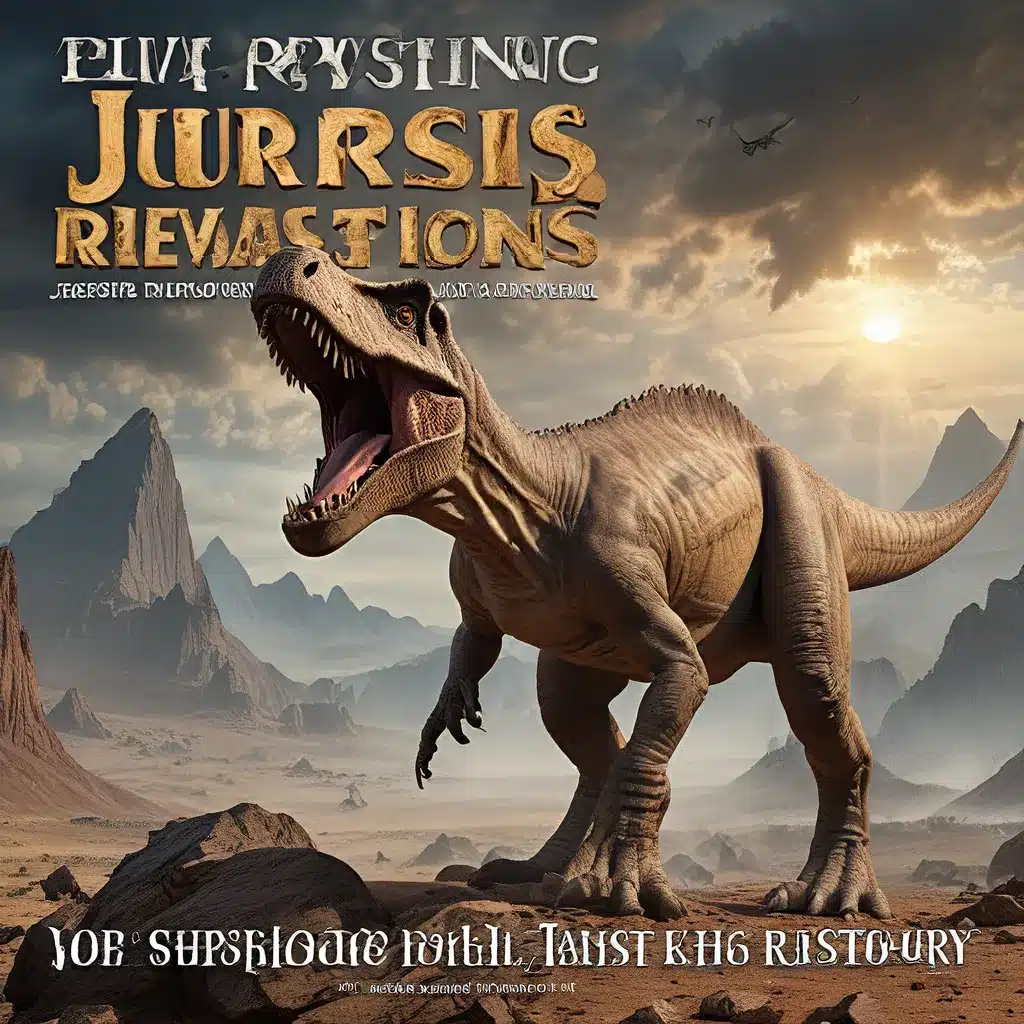
The world of paleontology has been undergoing a remarkable transformation in recent decades, with a flood of new dinosaur discoveries that are rewriting our understanding of these ancient creatures. From the Meraxes gigas, a colossal predator that would be at home in any fantasy bestiary, to the recurring phenomenon of large-bodied dinosaurs with surprisingly diminutive arms, the 21st century has ushered in a golden age of paleontological exploration and discovery.
A Cinematic Catalyst for a Dinosaur Renaissance
The surge in public interest and scientific investigation into the prehistoric world can, in large part, be traced back to the release of the blockbuster film Jurassic Park in 1993. This seminal cinematic experience, based on the novel by Michael Crichton, not only captivated audiences with its awe-inspiring depictions of living, breathing dinosaurs but also served as a catalyst for a renaissance in dinosaur research.
“Jurassic Park coming out generated a bunch of interest amongst young people that wanted to become paleontologists and get into the field,” says Dr. Nate Smith, Curator of the Dinosaur Institute at the Natural History Museum (NHM). The film’s dynamic, intelligent, and bird-like dinosaurs reflected a culmination of new discoveries and scientific theories that had emerged in the decades prior, challenging the long-held perception of dinosaurs as slow, cold-blooded, and dim-witted.
This “Dinosaur Renaissance” was fueled by advancements in paleobiology, evolutionary biology, and methods for accurately inferring the relationships between different dinosaur species. Paleontologists like John Ostrom, who discovered the birdlike Deinonychus antirrhopus, and Robert T. Bakker, author of the influential book “The Dinosaur Heresies,” laid the groundwork for the more accurate and dynamic portrayals of dinosaurs in Jurassic Park.
A Flood of New Discoveries
The surge of public interest in dinosaurs sparked by Jurassic Park has had a profound impact on the field of paleontology, leading to an explosion of new discoveries in the decades that have followed. “We’re still rapidly adding a lot more new dinosaur species to the record, essentially one new dinosaur every week,” says Dr. Smith, highlighting the vibrancy of the field.
These new discoveries are not just limited to previously unknown species, but also a deeper understanding of the anatomy, behaviors, and evolutionary relationships of dinosaurs. Advances in technology, such as the ability to analyze the chemical signatures and preserved melanosomes in fossils, have revealed insights into the coloration and appearance of these ancient creatures, further challenging the traditional depictions.
“I never would’ve predicted understanding coloration and fossils by looking at shapes and sizes and patterns of melanosomes and really exceptionally preserved feathers,” notes Dr. Smith, marveling at the new frontiers of dinosaur research.
Expanding the Dinosaur Family Tree
The surge in new discoveries has not only provided a more comprehensive picture of the dinosaur kingdom but has also challenged long-held assumptions about the origins and evolution of these ancient creatures. The exploration of South America, in particular, has “filled in a lot more of our knowledge about how dinosaurs got their start and where they came from,” according to Dr. Smith.
Fossils unearthed in Argentina and Brazil have shed light on some of the earliest dinosaurs, helping to “fill in the bookends of the beginning and the end of dinosaur evolution.” This has led to a better understanding of the complex web of evolutionary relationships among different dinosaur species, with the recognition that many were not the “evolutionary dead ends” previously portrayed.
Rewriting the Story of Human Evolution
While the focus of this article is on the remarkable discoveries in the world of dinosaurs, it’s important to note that the expanding knowledge of ancient life is not limited to the prehistoric realm. Recent advancements in the study of human evolution have also challenged long-held beliefs and are rewriting the story of our own origins.
New analyses of ancient DNA and the discovery of fossils like Homo floresiensis (the “hobbits” of Flores Island) have revealed that the story of human evolution is far more complex than previously thought. The interactions between modern humans and now-extinct human species, such as Neanderthals and Denisovans, have left lasting legacies that are only now being uncovered.
Furthermore, the exploration of regions like Australia and Southeast Asia has unearthed a wealth of archaeological evidence, including the oldest known rock art and the earliest bone ornaments, challenging the notion that the “creative explosion” of modern human culture was centered solely in Europe and Africa.
Unlocking the Secrets of the Past
As the field of paleontology continues to evolve, with new discoveries and technological advancements, the picture of the prehistoric world is becoming increasingly complex and nuanced. “We can’t say what the next huge breakthrough or mind-blowing new species will be, but we can be sure they are coming,” says Dr. Luis Chiappe, Senior Vice President of Research and Collections and Gretchen Augustyn Director of NHM’s Dinosaur Institute.
Whether buried in the earth or hidden within museum collections, the secrets of the past are waiting to be uncovered, each new revelation challenging our understanding and sparking new questions. “This duet between new discoveries and new questions will keep generations of paleontologists very busy for many years to come,” Chiappe adds.
As we venture deeper into the Jurassic and beyond, the future of dinosaur paleontology promises to be a wild and exhilarating ride. By exploring the remnants of these ancient beasts, we not only unravel the mysteries of the past but also gain valuable insights that can inform our understanding of the present and shape the future. The journey has only just begun, and with each new discovery, the world of dinosaurs continues to reveal its surprising wonders.


